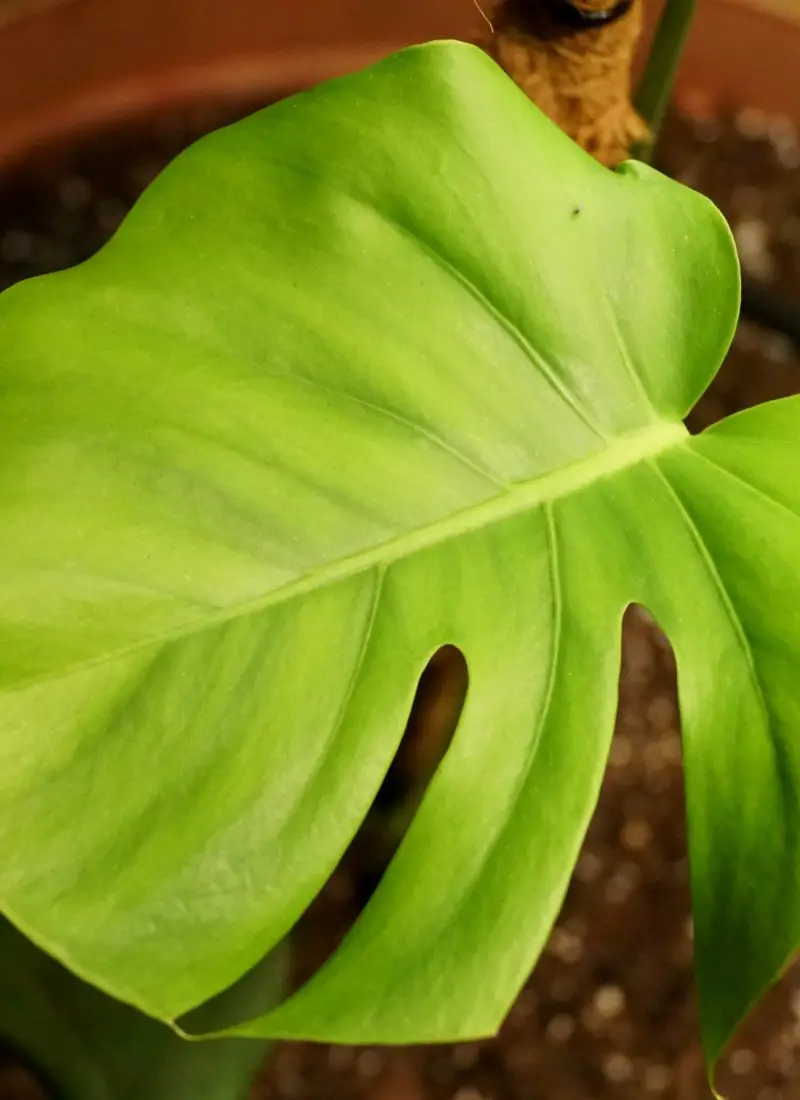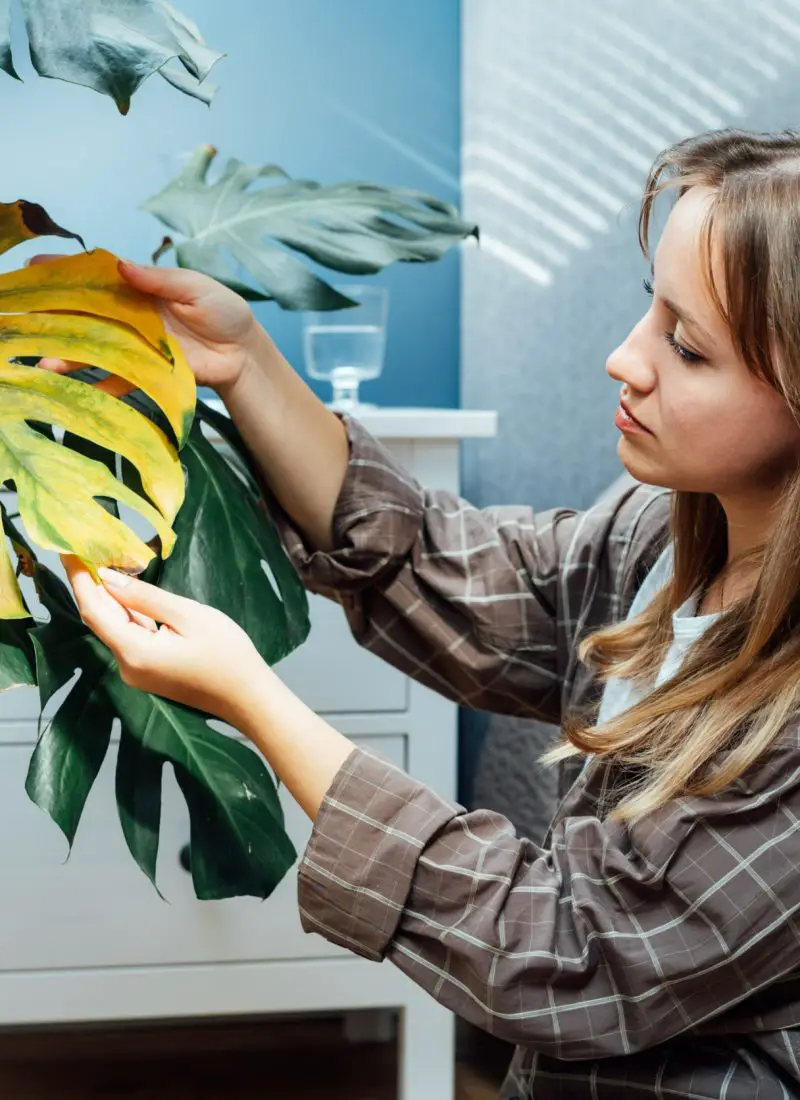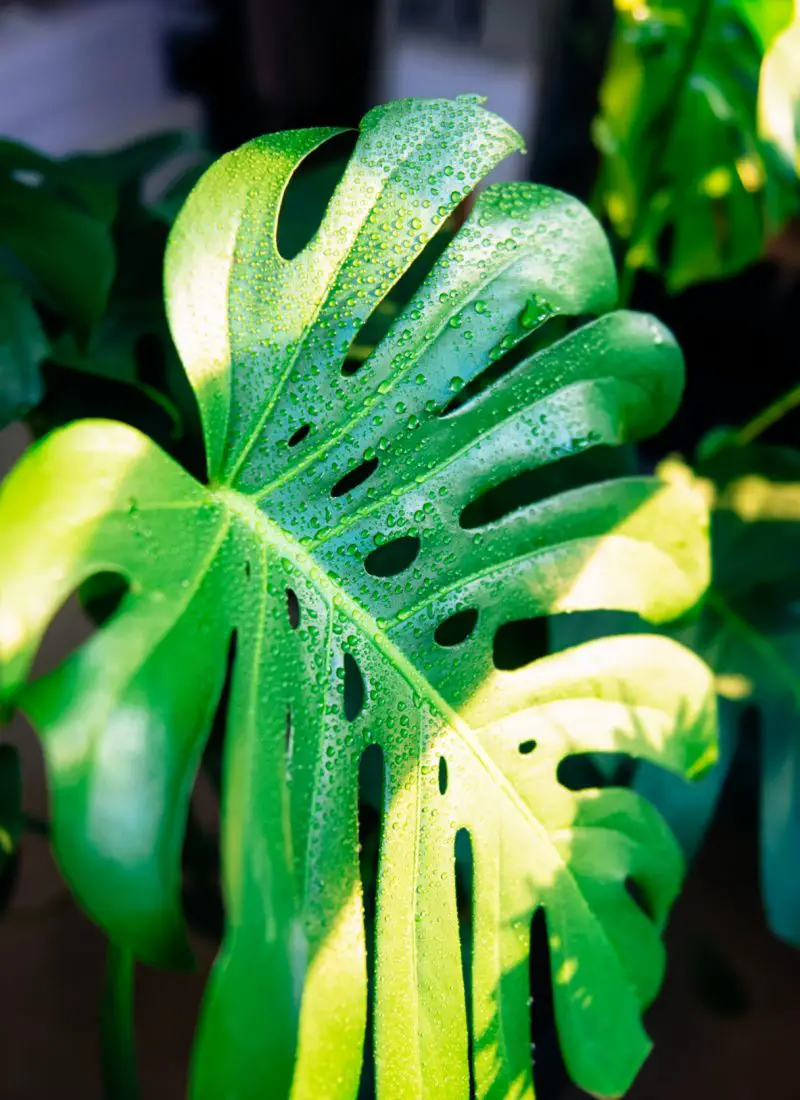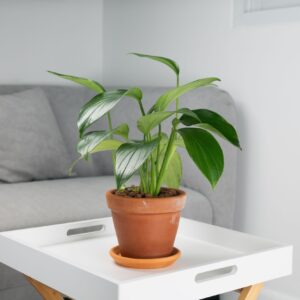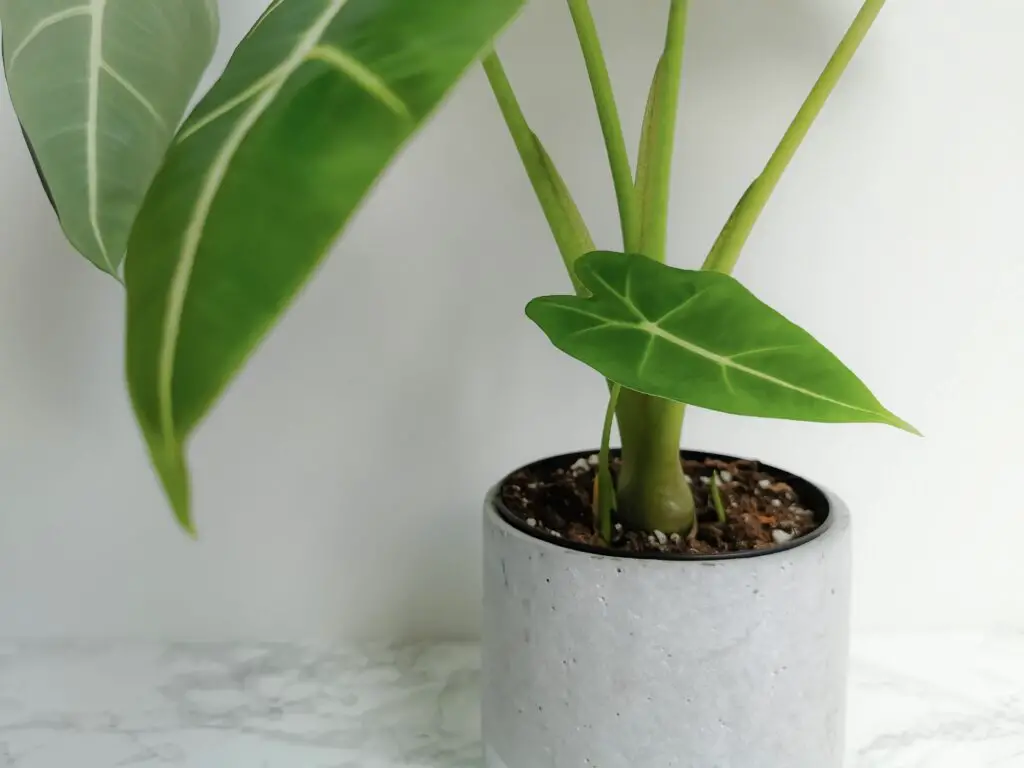
If you’ve taken care of an Alocasia for quite some time, you may have noticed an aerial root-like thing growing at its base. So, does this Elephant ear plant variety develop aerial roots?
Alocasias grow specialized aerial roots called stolons or runners. These form small bulbs or bulbils at the end – offshoots/pups from the parent plant. They can be left to grow in the same pot or propagated into another. But this only happens to certain Alocasia species, such as the Alocasia Wentii.
Below, I elaborate on this phenomenon further, along with helpful tips. But first, a brief introduction …
(As an Amazon Associate, I earn from qualifying purchases.)
Table of contents
What are Aerial Roots?

It’s a root type that grows above ground. They’re often seen in epiphytes, i.e., plants that grow on other plants or structures, such as orchids and air plants. They function primarily for three reasons:
- To support the plant’s upward growth, wrapping around its host or digging into footholds. In some cases, you may even see them overtake the larger plant, just like the Banyan tree. For regular houseplants like Monsteras, a moss totem pole is needed to encourage their development.
- To take nutrients from the air, the ground, or the host plant itself. Interestingly, certain bog plants also use their aerial roots to breathe in air as they grow in soaking-wet soil conditions.
- To produce buds or offshoots, i.e., mini versions of the mother plant, to develop further. As mentioned in the introduction, these are called ‘stolons’ or ‘runners’. You’ve probably seen this happen with a Spider plant or strawberries.
Now that you know what aerial roots are and their different types, what does that have to do with Alocasias? Well, for one thing, most grow from corms, i.e., tuberous roots, but some also make stolons/runners while others don’t. Even certain Colocasia species have the same tendency! It all generally comes down to the variety, so don’t worry if your particular Alocasia doesn’t grow them.
Is my Alocasia Growing Aerial Roots?
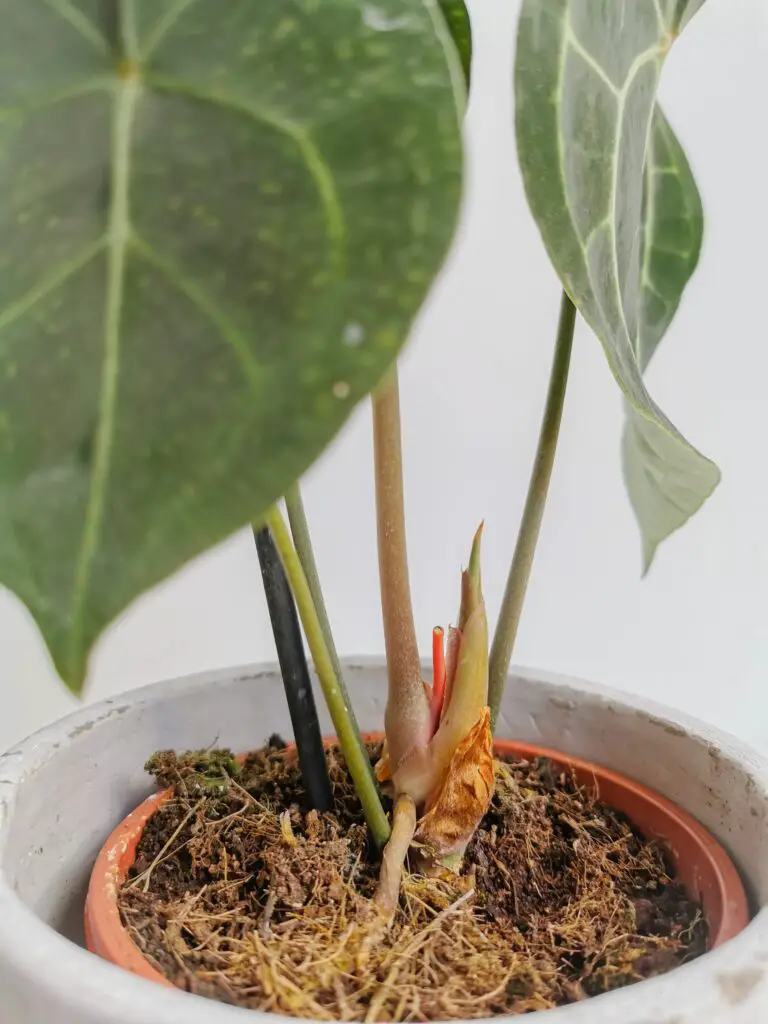
An Alocasia developing long protrusions from the stem’s base may become stolon/runners with bulbils or small bulbs at the end. They can be propagated, provided the bulbils already have roots or are still attached to the mother plant. Some may even develop underground and pop out of the soil due to the constrained space in the pot. But when this happens, it usually means the plant is thriving well enough in its environment to develop more offspring. However, this is not a common trait witnessed in all Alocasia species.
It’s worth noting that propagating these bulbils may be a hit or miss. They have to grow large enough, about the size of a ping-pong ball, before cutting them off the stolons/runners. But as I’ve said, you can leave them in the same pot as the mother plant. However, ensure to repot the plant a year later to make more space for the young buds to grow. If the bulbils don’t have roots and are detached from the aerial roots, discard them because they are already dead.
Some people don’t bother with these bulbils and cut the stolons/runners off for aesthetic purposes. And that’s ok because it doesn’t harm the plant at all. As long as the original plant is flourishing, that is good enough.
How to Care for an Alocasia?
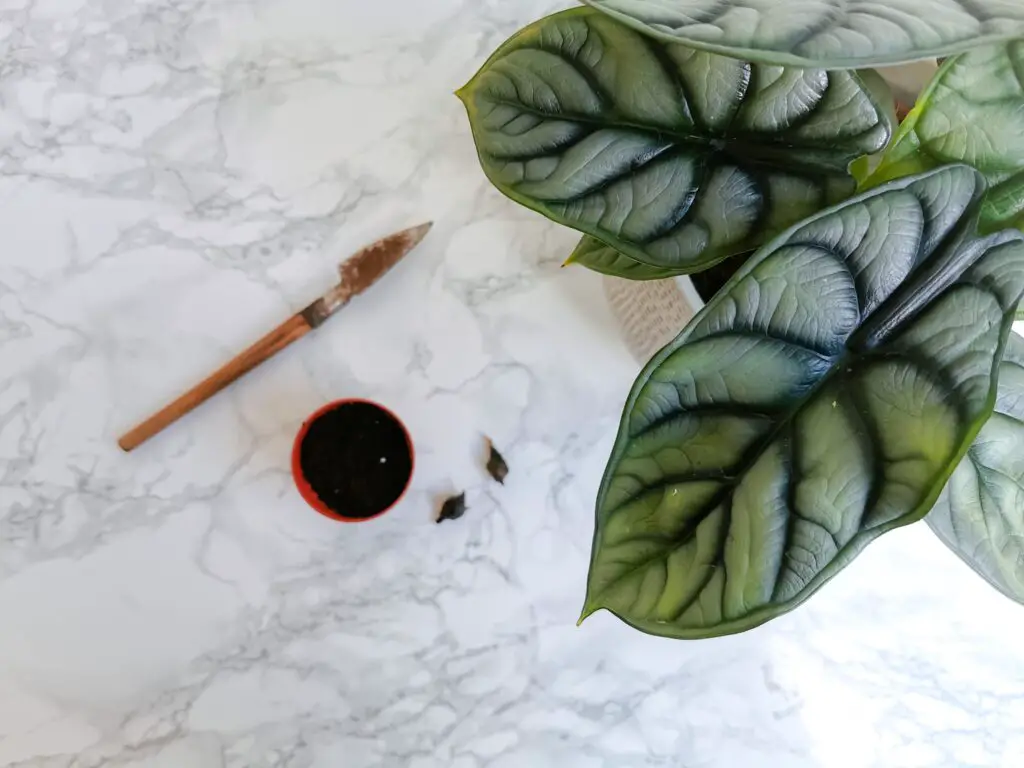
If you want to get your particular Alocasia variety to grow bulbils, there are 7 essential things to remember that will encourage their best development:
- Sun: Indirect sunlight, away from the direct light, to prevent scorching the leaves.
- Soil: Nutrient-rich and well-draining soil. Any type of potting media is acceptable as long as the corms don’t get waterlogged.
- Water: Weekly watering after the top 1-2 inches of soil dries out.
- Fertilizer: Monthly feeding with an all-purpose fertilizer during spring and summer.
- Temperature: 68 to 77°F. If grown outdoors, plant them somewhere safe, far from strong winds.
- Humidity: 40-60% humidity levels; use a humidifier as needed.
- Overwintering: Dig the corms up and keep them somewhere cool and dark. Once the last frost has passed in spring, plant in the soil again and water lightly.
Important note: Keep in mind that only certain species, such as Alocasia’ Frydek’ or Alocasia’ Wentii’ produces stolons with bulbils. Check whether your particular Alocasia does this or not to prevent unrealistic expectations.
And lastly, don’t forget to maintain your Alocasia as well with the following additional care:
- Prune: Only trim off old and damaged leaves.
- Propagate: By dividing the corms with healthy 2-3 leaves or planting the offshoots/bulbils produced from stolons/runners.
- Repot: Once every 2-3 years.
- Pest & disease problems: Do a weekly check, keeping an eye out in particular for spider mites. This ‘Common Houseplant Pests & Diseases’ article will tell you all you need to know about getting rid of them.
Frequently Asked Questions About Alocasias‘ Aerial Roots
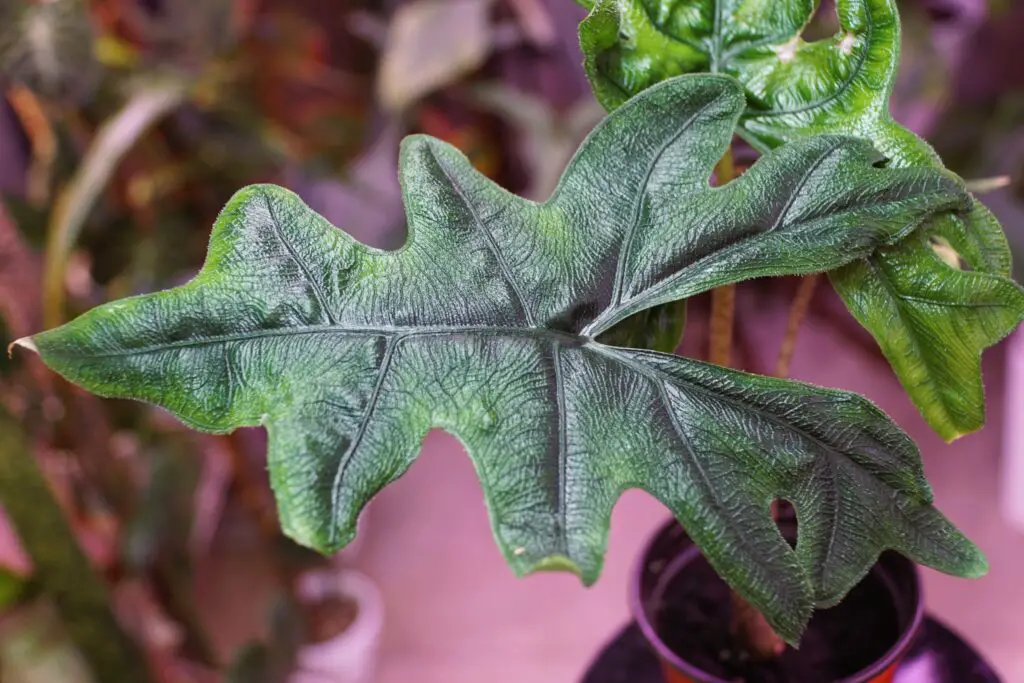
Alocasias develop specialized aerial roots called stolons/runners to produce offshoots, i.e., offspring of the mother plant. When this happens, they can grow as is or be removed from the parent plant once they’re big enough to develop in another pot. However, only specific varieties reproduce this way, as most grow from the same corm.
Allow the bulbils to develop until it is about the size of a ping pong ball before removing them from the stolon and planting them in another pot with the pointy top facing upwards. An alternative is to leave the offshoot to grow in the same pot as the mother plant. Just ensure to repot the whole thing after a year to provide enough space for them to grow larger.
It is best to plant a bulbil in soil once it has grown big enough to survive without the mother plant. But if the small bulb has produced enough roots, they can be removed and planted elsewhere. Leaving it to grow in the same container is good, but remember, it will take up space as it grows and may require repotting the year after.
Final Words
Overall, now you know that an Alocasia’s ‘aerial roots’ are none other than stolons/runners for the plant to spread more of its babies. So don’t panic once you see them growing weird vines out of nowhere. You may end up with several new Alocasia bulbils from it! When that happens, plant them, and you’ll have more Alocasias to add to your plant collection. Happy planting!
Disclaimer: Unfortunately, the available scientific literature and plant database on Alocasia’s stolon/runners is currently limited. So, a majority of this information has been gathered from experienced gardeners sharing their insights in gardening forums and sub-Reddit threads. But we will do our best to update this article from time to time with new facts released about this plant’s specialized aerial roots.
References:
- alocasia bulbils. (n.d.). Houzz. Retrieved November 5, 2022, from https://www.houzz.com/discussions/1688930/alocasia-bulbils
- Alocasia (Elephant’s-Ear, Giant Taro) | North Carolina Extension Gardener Plant Toolbox. (n.d.). Plants.ces.ncsu.edu. https://plants.ces.ncsu.edu/plants/alocasia/
- Alocasia (group) – Plant Finder. (n.d.). Www.missouribotanicalgarden.org. Retrieved November 5, 2022, from https://www.missouribotanicalgarden.org/PlantFinder/PlantFinderDetails.aspx?kempercode=a435
- Alocasia (Schott) G.Don. (n.d.). Worldfloraonline.org. Retrieved November 5, 2022, from http://worldfloraonline.org/taxon/wfo-4000001337
- Bulb Basics | Bulbs & More | University of Illinois Extension. (n.d.). Web.extension.illinois.edu. https://web.extension.illinois.edu/bulbs/bulbbasics.cfm
- Elephant Ears (Colocasia, Alocasia, and Xanthosoma). (n.d.). Retrieved November 5, 2022, from https://mastergardener.extension.wisc.edu/files/2015/12/ElephantEars.pdf
- International Aroid Society. (n.d.). Www.aroid.org. Retrieved November 5, 2022, from http://www.aroid.org/aroidl-archive/showthread.php?id=6971
- r/alocasia – Can someone ID and advise on the aerial root thing? :/. (2020). Reddit. https://www.reddit.com/r/alocasia/comments/ivm90d/can_someone_id_and_advise_on_the_aerial_root_thing/
- r/alocasia – New to alocasias. Are these aerial roots or is my bulb not buried deep enough? (2022). Reddit. https://www.reddit.com/r/alocasia/comments/sitzt1/new_to_alocasias_are_these_aerial_roots_or_is_my/
- State, L. (2022). Alocasia. Lsu.edu. https://www.lsu.edu/vetmed/toxic_plants/alocasia.php
- strange satellite growth from alocasia houseplant in the Ask a Question forum. (n.d.). Garden.org. Retrieved November 5, 2022, from https://garden.org/thread/view/58183/strange-satellite-growth-from-alocasia-houseplant/


